Excerpts from Jim Conrad's
Naturalist Newsletter
Entry dated May 26, 2024, issued from near Tequisquiapan; elevation about 1,900m, (6200 ft), ~N20.57°, ~W99.89°; Querétaro state, MÉXICO
THESPIS TESSELLATUS
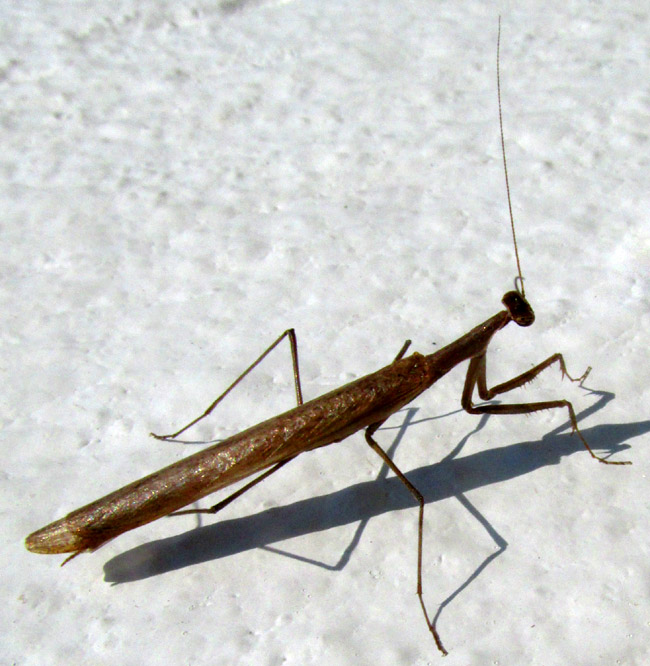
About an hour after sunrise, the above male mantis clung to the white wall of a house at the edge of a small village, a stone's throw from semiarid scrub dominated by spiny mesquite and acacia trees. The sunlight was so dazzling and already it was so hot that the insect's presence there was surprising. An outside nightlight wasn't far away and exhausted moths sometime recuperate on the wall, so maybe the insect had been attracted by the light. However, its presence still was hard to explain because nowadays very few insects of any kind are to be seen because the landscape is so dry and dead looking. The North American Drought monitor maps this area as experiencing a drought beyond the D2 Severe, and the D3 Extreme droughts; here we have the dreaded D4.
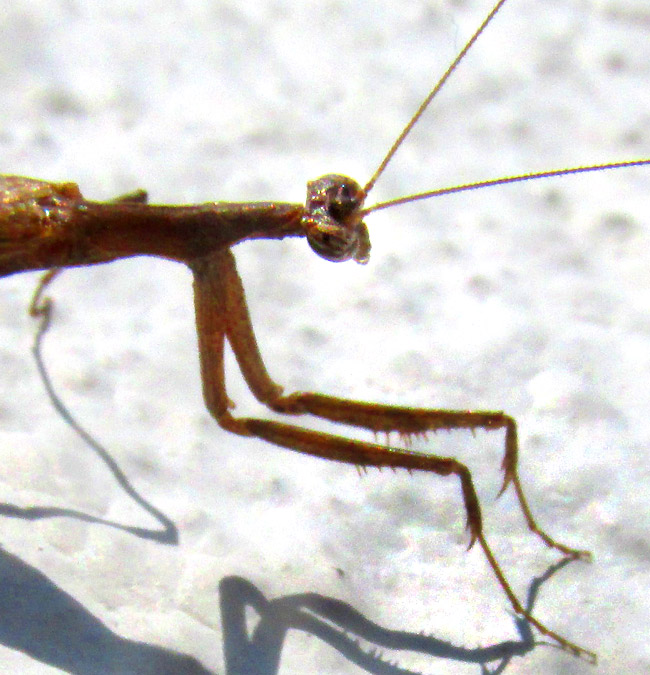
The mantid was small and exceptionally slender. In the above picture, the mantis is rotating his head so that the head's top is visible. In that position, atop the head and just above each compound eye, there's a tiny, almost hornlike bump. However, for identification purposes, here was the best field mark:
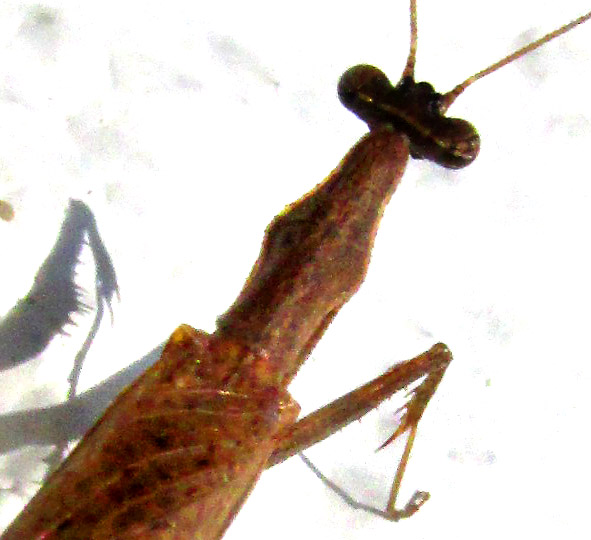
The bottle-shaped segment behind the head with its bulging compound eyes is the prothorax. The relative length of the "neck" of the bottom of the bottle separates this species from several very similar ones. Our individual's prothorax neck is about the same length as the bottom part.
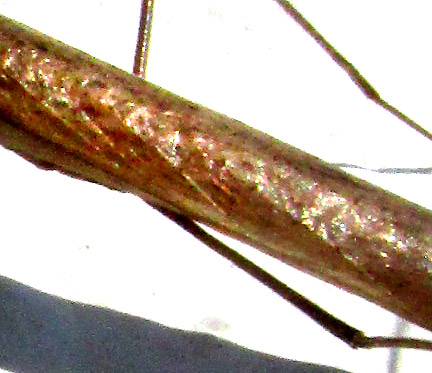
For identification to species level, it was helpful to note the wings' barely visible cross-veins connecting the diagonally running secondary veins in the picture at the right. The day after these pictures were taken, at the base of the same wall which earlier the mantis had occupied, what's seen below was noticed:

On the wall at the far right and the far left in the picture, are mantis egg cases, or oothecae, a close-up on the one on the right seen below:
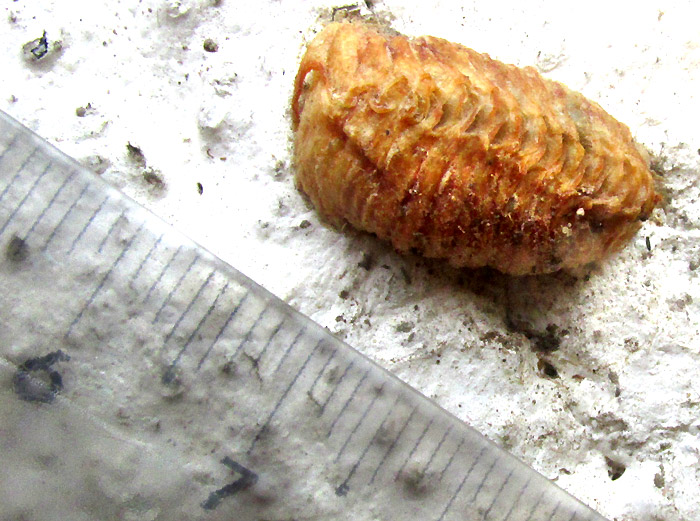
The ruler is in centimeters, so the ootheca is about 2m long, about ¾-inch. I can't be certain that the egg cases were deposited by the same species seen earlier on the wall, but the case's size and timing, and that fact that so far this year this is the first mantis I've seen, are strongly suggestive that they are. Also, I'd been looking for our mantis along the wall's base because I'd read that in the US the closely related and similar Thespis parva inhabits short grass. The oothecae are well placed for something needing a secure surface on which to rest, and quick access to short grass for freshly hatched nymphs.
Our mantis's small, slender form and the very long, slender prothorax lead to the mantis family Thespidae, whose species mostly occur in the world's tropics and subtropics. Matching pictures of our mantis with identified images on the Internet, with our mantis's slender body and the long, narrow prothorax, it became apparent that here we had a member of the genus Thespis. Also it became clear that many Internet pictures were misidentified. One reason for that may be that until recently the taxonomy of this branch of the Phylogenetic Tree of Life has been in a mess. I wouldn't have been able to identify our mantis to species level without the 2022 study by Kris Anderson entitled "Dr. Fothergill’s little gray American mantis: Taxonomic Revision of Thespis Serville, 1831."
Though that publication is well illustrated, the four currently-recognized Thespis species are so similar that distinguishing our wall percher from others was possible only with help of the study's species distribution map. On that map, it's clear that here in Querétaro state the only Thespis species to be expected is THESPIS TESSELLATUS.
Thespis tessellatus is endemic just to central Mexico, from Sinaloa and Guerrero states in the west, east across the altiplato to the Eastern Sierra Madre mountains. Thespis tessellatus is very similar to the much better known Thespis parva, known in earlier literature as Oligonicella scudderi, occurring across the southeastern and south-central US, and northeastern Mexico. Sometimes that species is known as the Slender Prairie Mantid, but our Thespis tessellatus bears no English name.
Besides confirming our suspicion that Thespis tesselatus males fly at night and are attracted to night lights, Kris Anderson's taxonomic revision also tells us that females of Thespis species develop no wings, a feature shared with numerous mantis species; in fact, in a few species, both sexes are wingless. It would seem that once a habitat is destroyed, then allowed to become reestablished, the return of any species with wingless females into that area would depend on how far a female could walk to deposit her egg cases.
However, female mantises are known to be robust hunters who might travel farther than we'd imagine. Anderson says that Thespis parva females can capture and hold aloft prey that are equal to half their body length, and a large portion of their own body weight.